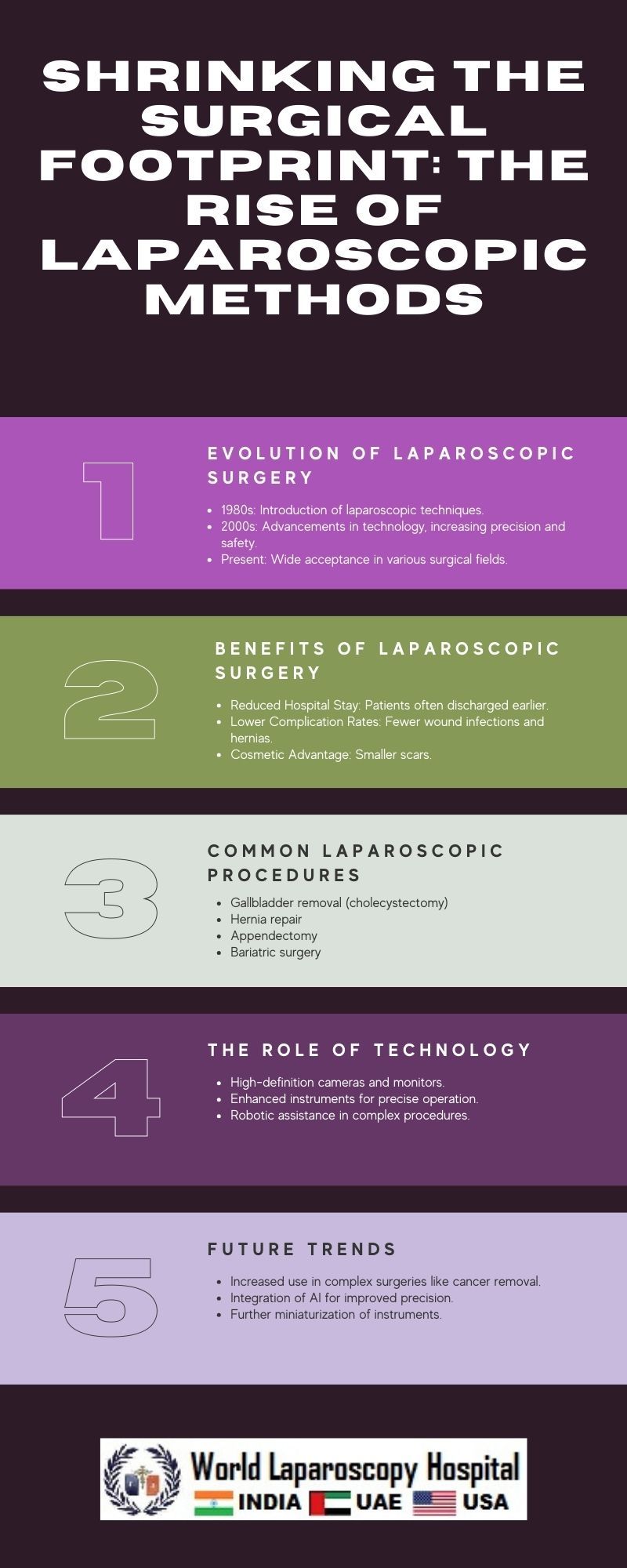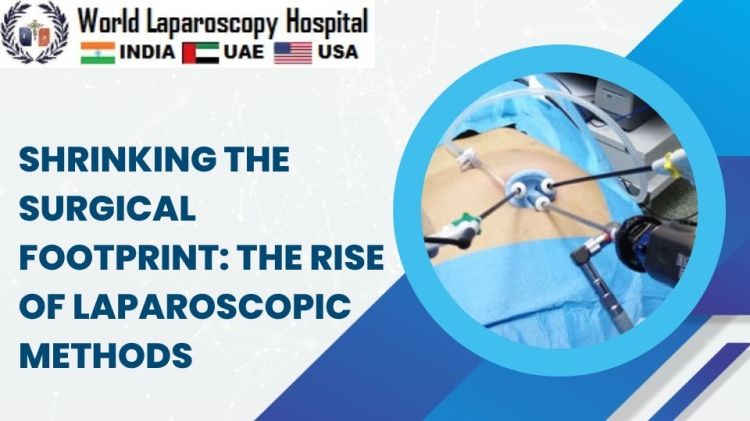Shrinking the Surgical Footprint: The Rise of Laparoscopic Methods
Introduction
Laparoscopic surgery, often referred to as minimally invasive surgery, has revolutionized the field of surgery over the past few decades. This article delves into the evolution, advantages, techniques, and future potential of laparoscopic methods, particularly focusing on how they have significantly reduced the surgical footprint in terms of patient recovery time, hospital stays, and overall healthcare costs.

Evolution of Laparoscopic Surgery
Laparoscopic surgery's history dates back to the early 20th century, but it was in the 1980s and 1990s that it gained significant traction. The first laparoscopic procedure, a laparoscopic cholecystectomy (gallbladder removal), marked a pivotal moment in surgical history. This innovation was driven by the desire to reduce patient discomfort and recovery time associated with traditional open surgeries.
Principles and Techniques
Laparoscopic surgery employs small incisions, usually 0.5-1.5 cm, through which a laparoscope (a long, thin tube with a high-intensity light and a high-resolution camera) and other surgical instruments are inserted. The abdomen is inflated with carbon dioxide gas to create a working space. The surgeon then operates by watching the magnified images on a video monitor, a technique that requires considerable skill and training.
Advantages Over Traditional Surgery
The most significant advantage of laparoscopic surgery is the reduced trauma to the body. Smaller incisions mean less postoperative pain, reduced risk of infection, and quicker healing. This approach also leads to less scarring and better cosmetic results. Additionally, the minimally invasive nature of the procedure often results in shorter hospital stays and quicker returns to normal activities, which is a boon for both patients and healthcare systems.
Range of Procedures
Initially limited to simple procedures like gallbladder removal and diagnostic operations, laparoscopic techniques have now expanded to more complex surgeries, including hernia repairs, appendectomies, and even certain cancer operations. Bariatric surgery for weight loss is another area where laparoscopy has become the standard.
Training and Skill Development
The transition from open to laparoscopic surgery has required a paradigm shift in surgical training. Surgeons must develop new skills, such as hand-eye coordination and spatial awareness in a two-dimensional environment. Simulation-based training and virtual reality tools are increasingly being used for this purpose.
Patient-Centered Benefits
Patients have greatly benefited from laparoscopic methods. Reduced pain and quicker recovery mean less time away from work and family, leading to better overall patient satisfaction. The decreased need for pain medication and shorter hospital stays also contribute to lower healthcare costs.
Challenges and Limitations
Despite its many advantages, laparoscopic surgery is not without challenges. The equipment and training can be costly, and not all procedures can be performed laparoscopically. Additionally, it requires a high level of skill and experience, which can be a barrier in areas with fewer resources.
The Future: Robotic Surgery and Beyond
The future of laparoscopic surgery is intrinsically linked with robotic surgery. Robotic systems, like the da Vinci Surgical System, enhance the capabilities of laparoscopic techniques by providing greater precision, flexibility, and control. The convergence of robotics, artificial intelligence, and laparoscopy is set to further revolutionize surgical procedures.
Environmental Impact
Laparoscopic surgery has also been noted for its reduced environmental footprint compared to open surgeries. Less energy consumption, reduced need for sterilizing large instruments, and fewer disposable materials contribute to this aspect.
Conclusion
The rise of laparoscopic methods in surgery has been a game-changer in healthcare. By reducing the physical and emotional burden of surgery on patients, decreasing healthcare costs, and improving surgical outcomes, these techniques represent a significant step forward in medical science. As technology continues to advance, the scope and efficacy of laparoscopic surgery are expected to grow, further shrinking the surgical footprint and enhancing patient care.






